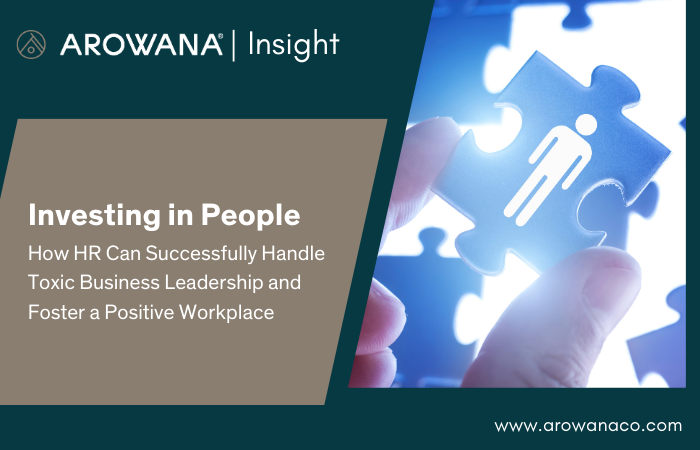
Toxic business leadership can quietly rot the core of an organisation, leading to high turnover, low morale, and plummeting performance. While many companies recognise the dangers of toxic leadership, few have a truly sustainable strategy to fix it.
This is where Human Resources (HR) plays a critical, transformative role.
The best and most sustainable way for HR to tackle issues with a toxic leader isn't to simply react when things go wrong—it's to implement a comprehensive, multi-layered approach grounded in transparency, accountability, employee well-being, and long-term cultural transformation.
Let’s explore how HR managers can build and execute a winning strategy to deal with toxic leadership—for the health of both employees and the business itself.
The first step in dealing with toxic leadership is making sure employees feel safe enough to talk about it. Too often, toxic leaders thrive because employees are too afraid to speak up. Fear of retaliation, career sabotage, or simply being ignored can silence those most affected.
HR must proactively create multiple, accessible, and confidential avenues for employees to report concerns.
Some of the most effective ways include:
However, it doesn’t stop there. Regular town halls, focus groups, and feedback sessions give employees a voice and create a culture where open dialogue becomes normalised, not feared.
When employees see that their feedback leads to real action, trust begins to build—and toxic behaviors can be surfaced early, before they cause widespread damage.
Without hard data, leadership issues often remain a matter of opinion rather than fact. To create a strong case for addressing toxic leadership, HR must rely on robust, ongoing monitoring systems. Some best practices include:
If toxic leadership is suspected, HR should also conduct deeper qualitative research, such as:
By combining data with personal testimony, HR can build an undeniable case that highlights the leadership issues at play—and move forward with evidence-based solutions.
Toxic leadership can’t be changed unless leaders are held to clear, enforceable standards. Accountability begins with transparent policies that outline:
It’s not enough to have vague guidelines buried in the employee handbook. Leadership expectations must be visible, regularly discussed, and formally incorporated into performance evaluations.
This means leaders should be assessed not only on what they achieve, but on how they achieve it. Metrics might include:
When leaders know that poor behavior will directly impact their bonuses, promotions—or even their jobs—organisations send a clear message: culture and people matter.
And importantly, if toxic behavior is repeated or severe, zero-tolerance policies must be enforced, even if that means removing high-performing but toxic leaders from their roles. Protecting the organisation’s health is always more important than protecting an individual’s position.
Not every toxic leader is malicious—sometimes, they simply lack the skills to lead effectively. That's why targeted leadership development is critical.
Instead of assuming that toxic leaders are irredeemable, HR can invest in helping them grow through:
This sends a powerful message across the organisation: Everyone, including leadership, is expected to learn, grow, and evolve.
In many cases, leaders who once exhibited toxic behaviors can, with the right support, transform into empathetic, effective managers.
Where change is possible, HR must facilitate it.
Toxic leadership almost always breeds conflict—but conflict itself isn’t always bad. Handled well, conflict can be an opportunity for healing, transparency, and cultural change.
HR must position itself as an impartial mediator between leaders and their teams. This involves:
Psychological safety—the belief that one can speak up without fear of punishment or humiliation—must be the foundation of these efforts.
When conflict resolution becomes part of the company DNA, organisations become stronger, more adaptable, and more united—even after facing leadership challenges.
Addressing toxic leadership isn’t just about fixing the bad—it’s about celebrating and reinforcing the good.
To create a workplace where toxic leadership cannot thrive, HR must actively promote positive leadership behaviors through:
Culture is built through repetition and reinforcement. When organisations consistently lift up the leaders and employees who embody their best values, those values become the new normal.
At the same time, HR must regularly review and revise company policies to ensure they reflect and reinforce the desired culture—not just on paper, but in daily practice.
There’s no "one-and-done" solution for toxic leadership. Cultural transformation is a living, breathing process that requires:
Staying vigilant is key. New challenges, external pressures, or leadership changes can always reintroduce toxicity into the system. By keeping a close watch and committing to ongoing improvement, HR ensures that toxic leadership remains the exception—not the rule.
Ultimately, sustained commitment wins the day. Not perfection, not quick fixes—just relentless, thoughtful action over time.
Toxic leadership is a serious threat—but it is not unbeatable.
HR managers are uniquely positioned to drive change, protect employees, and shape a healthier future for their organisations. By combining open communication, robust monitoring, leadership accountability, targeted development, and an unwavering commitment to positive culture, HR can not only address toxic leaders but prevent them from ever gaining a foothold again.
The reward for this hard work is immense:
When HR leads the way, everybody wins. A workplace free from toxic leadership isn’t just a dream. With the right strategy, it’s a reality well within reach.
For more news and insights, stay tuned to the Arowana website.